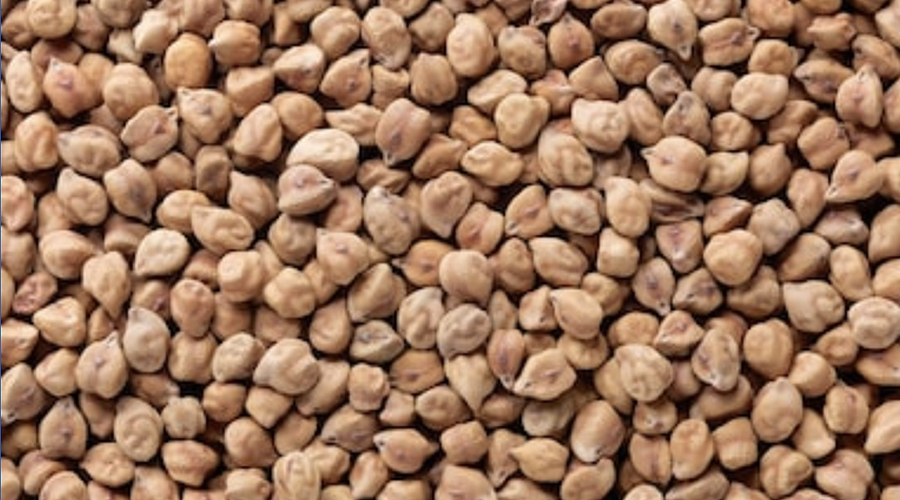
NEW CROP PUTTING PRESSURE ON MARKET
Sowing in India has increased, and good production is expected. Favorable weather will add more weight to productivity. In anticipation of a large and good crop, stockists increased sales. A decline in the futures market is causing a slowdown in the spot market. Delhi gram declined by Rs. 125-150 to Rs. 4,575 – 4,625 with average daily arrival of 15-20 motor gram at Lawrence Road, Delhi. Thus far this rabi season, 109.14 lakh ha. have been sown to gram, up from 105.46 lakh ha. at the same time last year. There have been sporadic arrivals in Karnataka. NAFED sales have remained stagnant.
Ports
Import demand weakened due to falling domestic prices. Prices fell by Rs. 100-125 during the current week and trading took place in Mumbai at Rs. 4,350-4,375.
Madhya Pradesh
Falling prices made traders nervous. By the weekend, prices in MP had dropped Rs. 100-175 from the week before. Over the weekend, trading took pace at Rs. 4,450-4,500 in Indore, Rs. 4,300-4,325 in Ashoknagar, Rs. 4,100-4,300 in Ganjbasoda and Rs. 4,475-4,525 in Katni.
Rajasthan
Prices fell Rs. 100-150 in Rajasthan. Over the weekend, trading took pace at Rs. 4,000-4,100 in Jodhpur, Rs. 4,600 in Jaipur, Rs. 4450 in Bikaner and Rs. 4150 in Sumerpur.
Maharashtra
In Maharashtra, new crop started arriving at markets. Stockists are releasing old stocks. Weekend prices decreased by Rs. 50-150. A quintal of gram traded at Rs. 4,450-4,950 in Solapur, Rs. 4,100-4,200 in Amravati, Rs. 4,400-4,475 in Latur, Rs. 4,450-4,500 in Akola, and Rs. 4,400-4,450 in Nagpur.
Gujrat
In Gujrat, the area sown to gram is reportedly much larger than it was last year. New crop may start arriving on Feb. 15. In Gujrat, chana traded Rs. 50-100 less. With this discount, it traded at Rs. 4,400-4,500 in Dahod, Rs. 4,000-4,500 in Rajkot and Rs. 4,100-4,300 in Junagadh.
Others
In Raipur, Chhattisgarh, chana traded at Rs. 4,400, down Rs. 150. Price decreases were also reported at other markets.
Processed Chana/Chana Dall
Because of the drop in whole chana prices, prices for processed chana fell as well. Prices for processed chana dal fell Rs. 200-250 and it traded at Rs. 5,200-6,150/quintal over the weekend.
Due to the reduced prices, markets may surge this week. Local demand may improve. There is favorable weather and chana production may be at record levels. Since restrictions were placed on pea imports, gram consumption increased 1 – 1.5 million MT/year.
Prices of all pulses are below MSP. On Feb. 15, the government may start procuring chana in various states. Assuming a crop of 11 million MT, NAFED may procure 20-25% of the total. Last year, NAFED and other agencies procured 2.183 million MT. A large amount of 2019 rabi chana sold in PMGKAY. Some 0.7-0.8 million MT of old crop inventories remain, which means NAFED sold/supplied 2.7 million MT of 2019 and 2020 season crop. This is good news for traders. Chana prices may surge in the second half of the year.
With the 5-10% discount on Rs. 4,875, NAFED sold only 16,000 MT of gram.
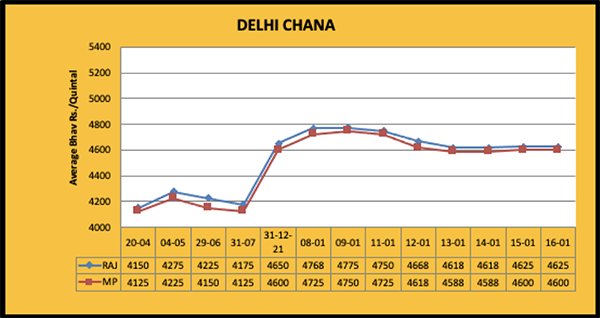
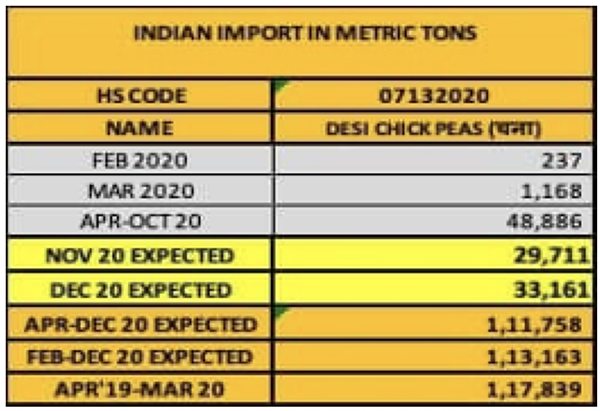
Gram sowing at record level
The area sown under gram – the most important rabi pulse crop – has hit a new record high of 10.915 million ha., up 3.5% over the previous year’s 10.545 million ha. The normal seeded area is 9.275 million ha. In 2018/19, gram was sown on 9.544 million ha. In 2017/18, 10.595 million ha., in 2016/17, 9.847 million ha. and in 2015/16, 8.907 million ha.
According to the latest data from the Ministry of Agriculture, the area under gram in Maharashtra increased from 2.038 million to 2.331 million ha. In Gujrat, the gram area rose from 0.375 million to 0.804 million ha. In Chhattisgarh, the area increased from 0.392 million to 0.4423 million ha. In Bihar state, the area increased from 0.106 million to 0.14 million ha. In the previous year, sowing in Jharkhand reached 0.215 million ha.
In Rajasthan, the second largest gram producing state, the area fell from 2.18 million to 2.068 million ha. In Madhya Pradesh, the largest producer of gram, the area fell from 2.738 million to 2.573 million ha. In Karnataka, the area slipped from 1.226 million to 1.175 million ha. This season, Andhra Pradesh recorded a drop in gram sowing from 0.454 million to 0.353 million ha.
Uttar Pradesh sowing was stable at 0.585-million ha. In other states, the area fell slightly in Telangana.
Rabi sowing at record level
The latest data from the Union Ministry of Agriculture shows that as of January 15, the total area seeded to rabi crops has expanded to nearly 65.2 million ha. The area sown to wheat, gram and mustard has already set new records and the area sown to coarse grains is lagging behind. The seeding of paddy is still continuing in the southern states. The area sown to wheat is at a record 33.7 million ha.
The area of most of the major pulses, and gram and lentil in particular, increased by more than 0.40 million ha. to a record 10.9 million ha. Sowing increased rapidly in Maharashtra and Gujarat.
The area sown to lentils has hit 1.62 million ha., up 2% over this time last year.
In addition to gram and lentils, other rabi pulse crops include peas, urad, moong, khesari and kulthi.
The major rabi season oilseed, mustard, has also seen its seeded area expand to a new record high. Thus far, 73 lakh ha. have been seeded to mustard, still shy of the government target of 75-80 lakh ha.
Rains are expected to continue in the southern states, damaging urad and other crops
Thiruvananthapuram. The meteorological department has forecast rains or thundershowers in the South peninsular region of India this week. On January 10-11, heavy rains were reported in Lakshadweep, Tamil Nadu, Kerala, Pondicherry, Karaikal and Mahi regions. Extreme torrential rains were recorded in some parts of Tamil Nadu and are expected to cause severe damage to paddy, pulses and oilseeds.
In the first 10 days of January, there was a surplus of 211% of the national average, but there was a lack of rainfall in the eastern and northeastern regions. Goa, Tamil Nadu, Kerala, Karnataka and Andhra Pradesh received above normal rainfall, while Telangana received less rainfall. Good rains in the northwestern region of the country benefited other rabi crops including wheat.
There is a cyclonic circulation off the coast of Sri Lanka and therefore there is a possibility of rain in South India over the next few days. There is a La Niña weather cycle in the Pacific Ocean, which will remain strong till March and will start returning to normal from April-May. It is likely to have a limited impact on India. The weather is expected to be quite favorable for rabi crops in North India.
Emphasis on the need to start supplying pulses under PDS
New Delhi. Domestic production of pulses has increased tremendously during the last five years and hence the need for imports has been reduced significantly. The government agency NAFED buys large quantities of pulses from farmers at a minimum support price and later re-sells them. This results in losses for traders and increases the hassle for dal millers. NAFED’s managing director says that if pulses are supplied under the Public Distribution System (PDS) this could resolve these issues. NAFED provides a variety of pulses via public food distribution schemes and to institutions. Leftover stocks are sold in markets in OMSS. These stocks could be made available to the poor at a discounted price through PDS. This would be a good option that would also help address malnutrition.
The first consignment of Covishield departed from the Serum Institute for 13 locations
Pune. The first consignment of the Covishield vaccine left the Pune airport. Covishield is from the well-known vaccine manufacturer Serum Institute. The vaccine is transported in three temperature-controlled arrangements. From there it was be airlifted to 13 locations.
This vaccine is considered to be effective in the prevention and treatment of the novel coronavirus.
This vaccine is being delivered from Pune to Delhi, Kolkata, Ahmedabad, Chennai, Bangalore, Karnal, Hyderabad, Vijayawada, Guwahati, Lucknow, Chandigarh and Bhubaneswar. A second batch will also be dispatched soon. The first vaccination campaign started on January 16.
This vaccine is also being exported to Sri Lanka, Bangladesh, and other countries.
RABI SOWING: DEPARTMENT OF AGRICULTURE, COOPERATION & FAMERS WELFARE
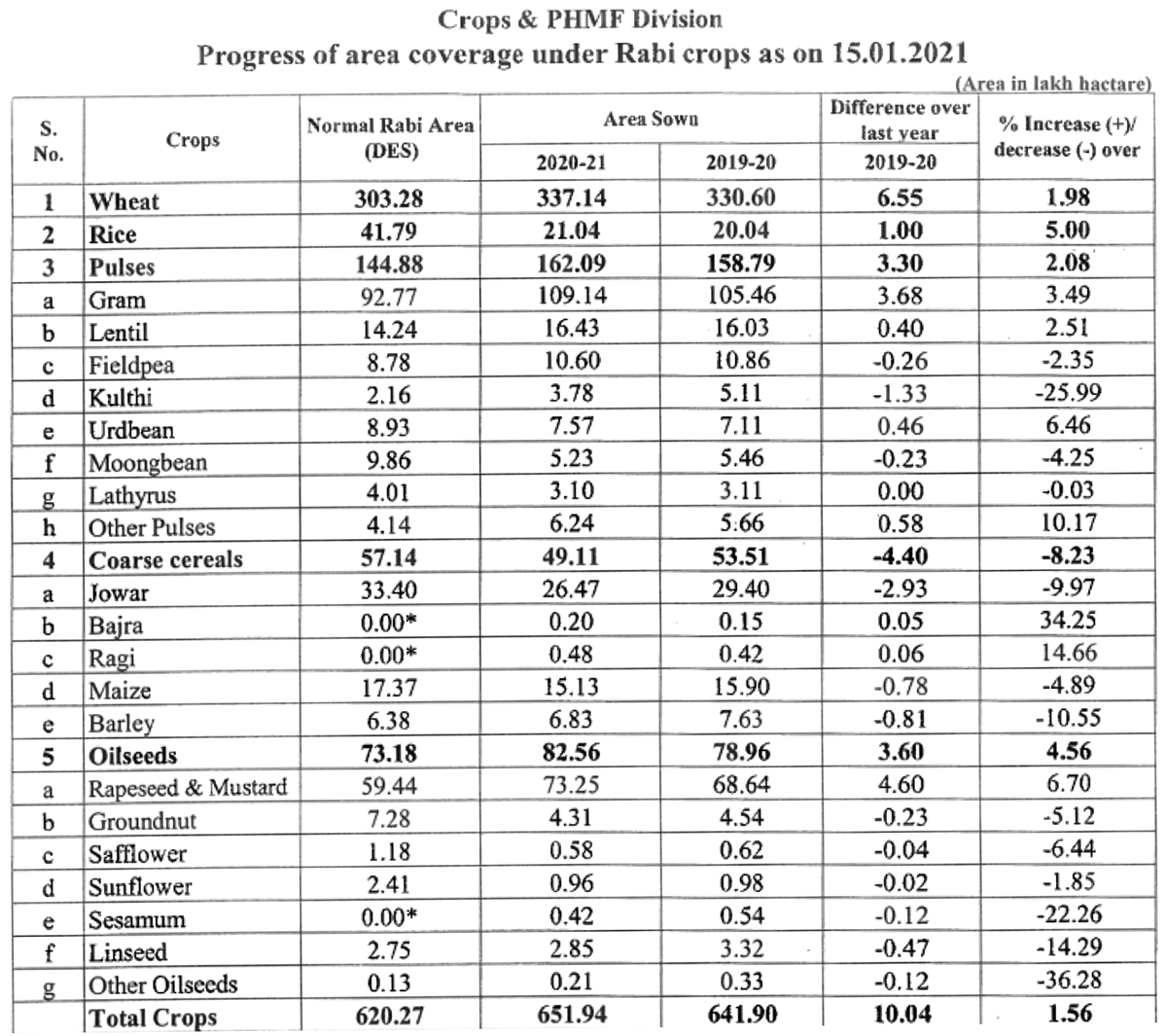
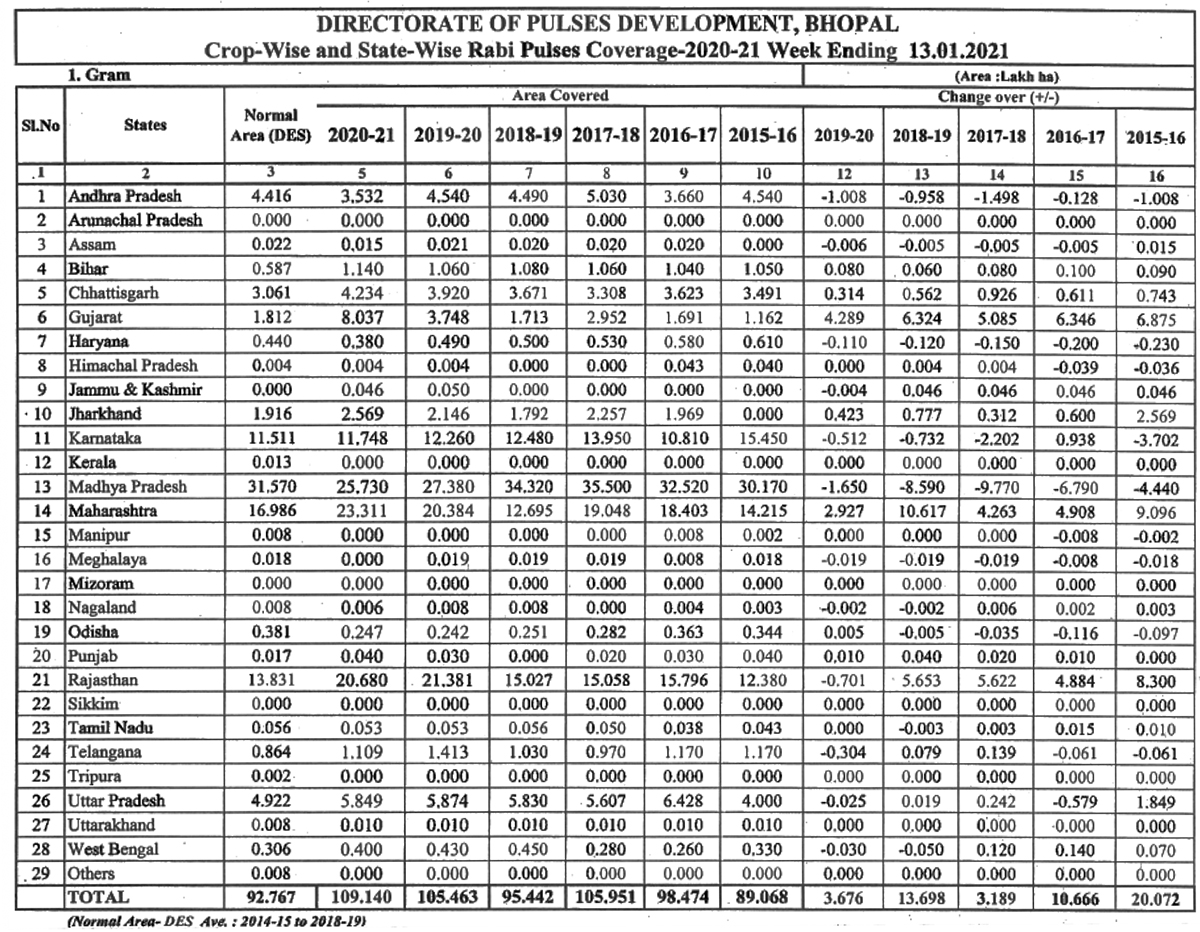
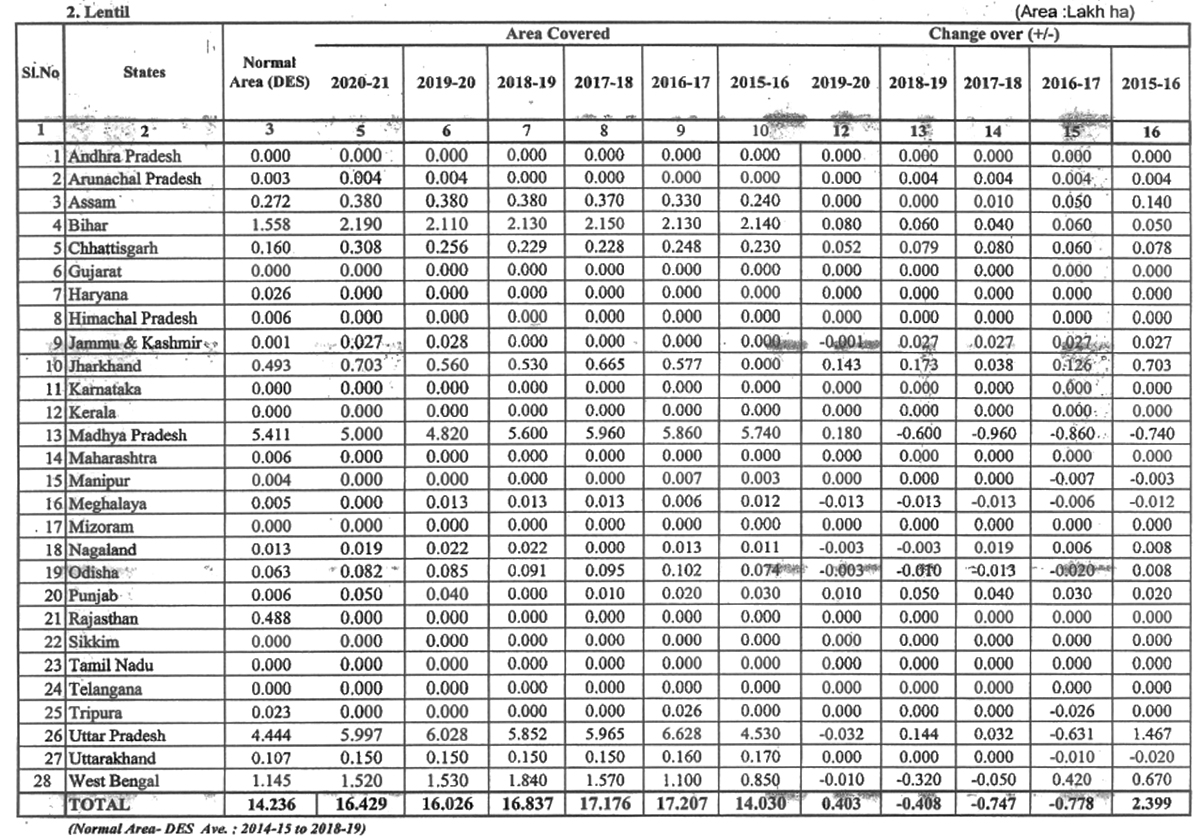
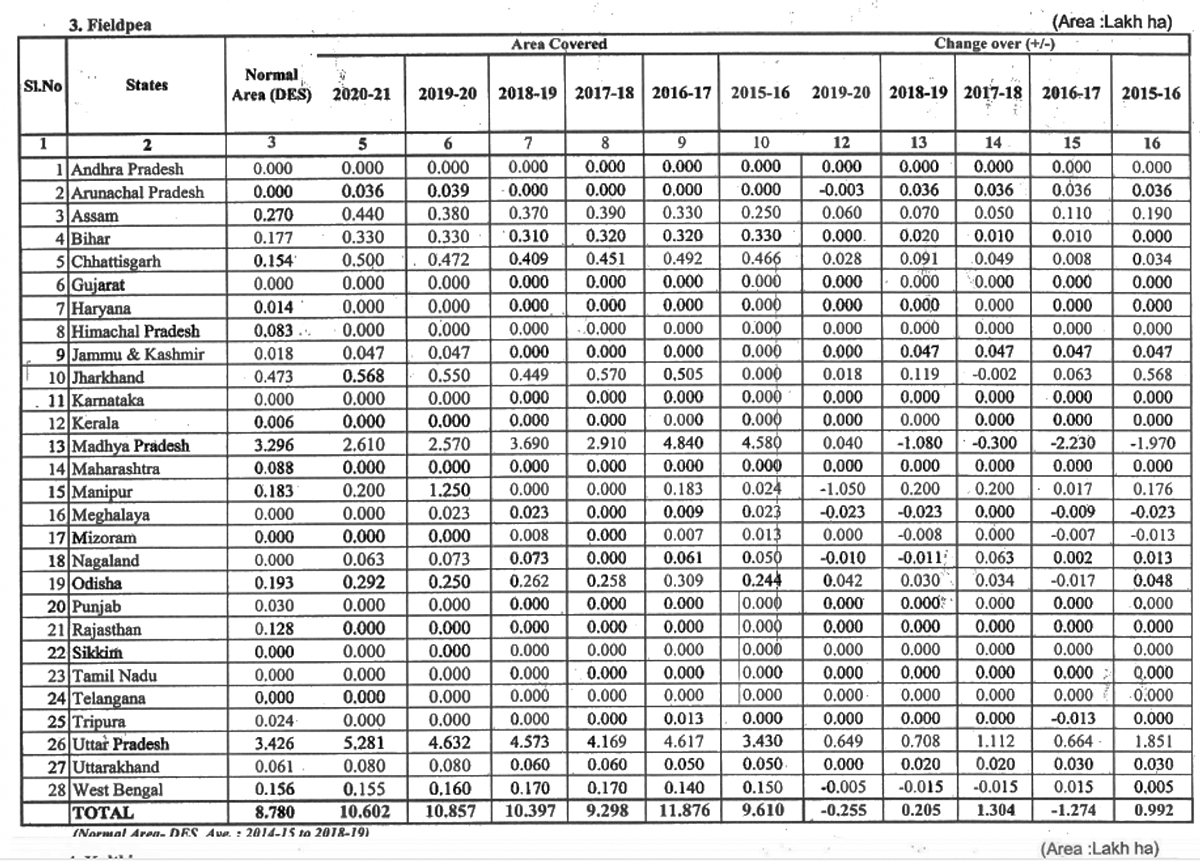
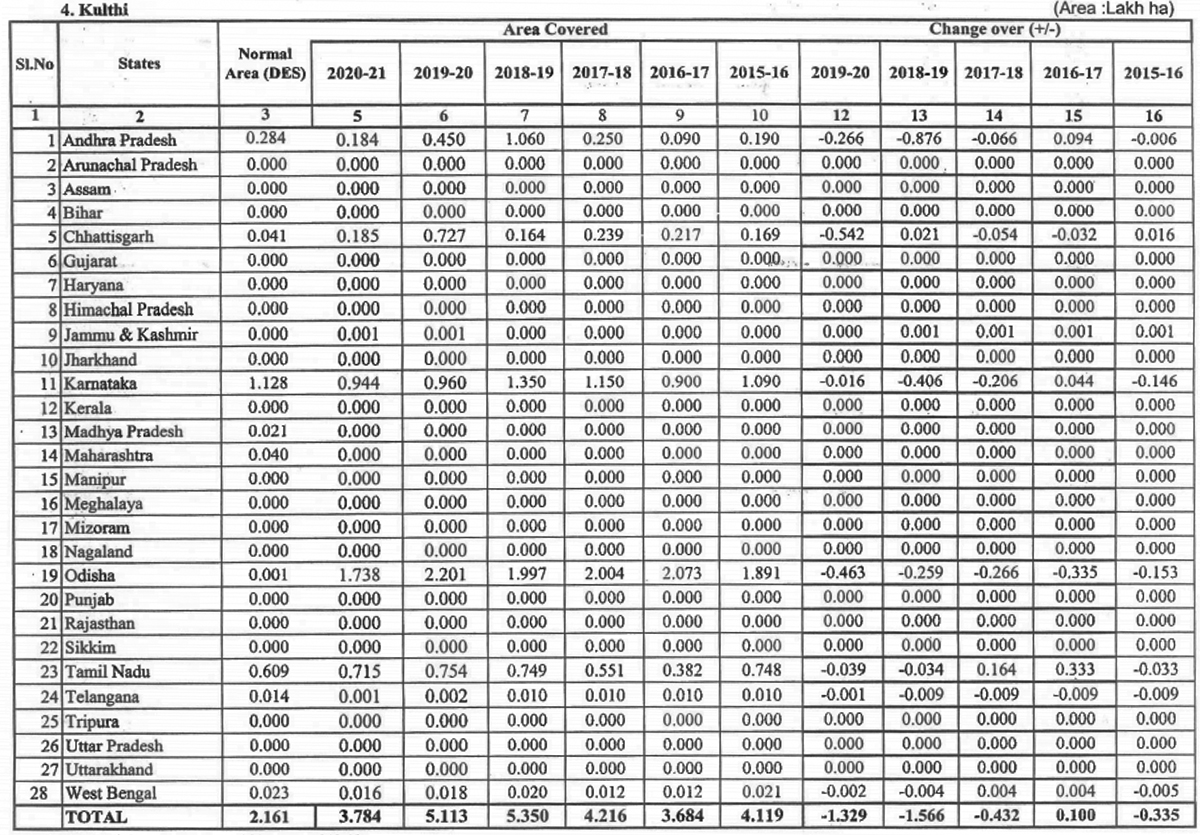
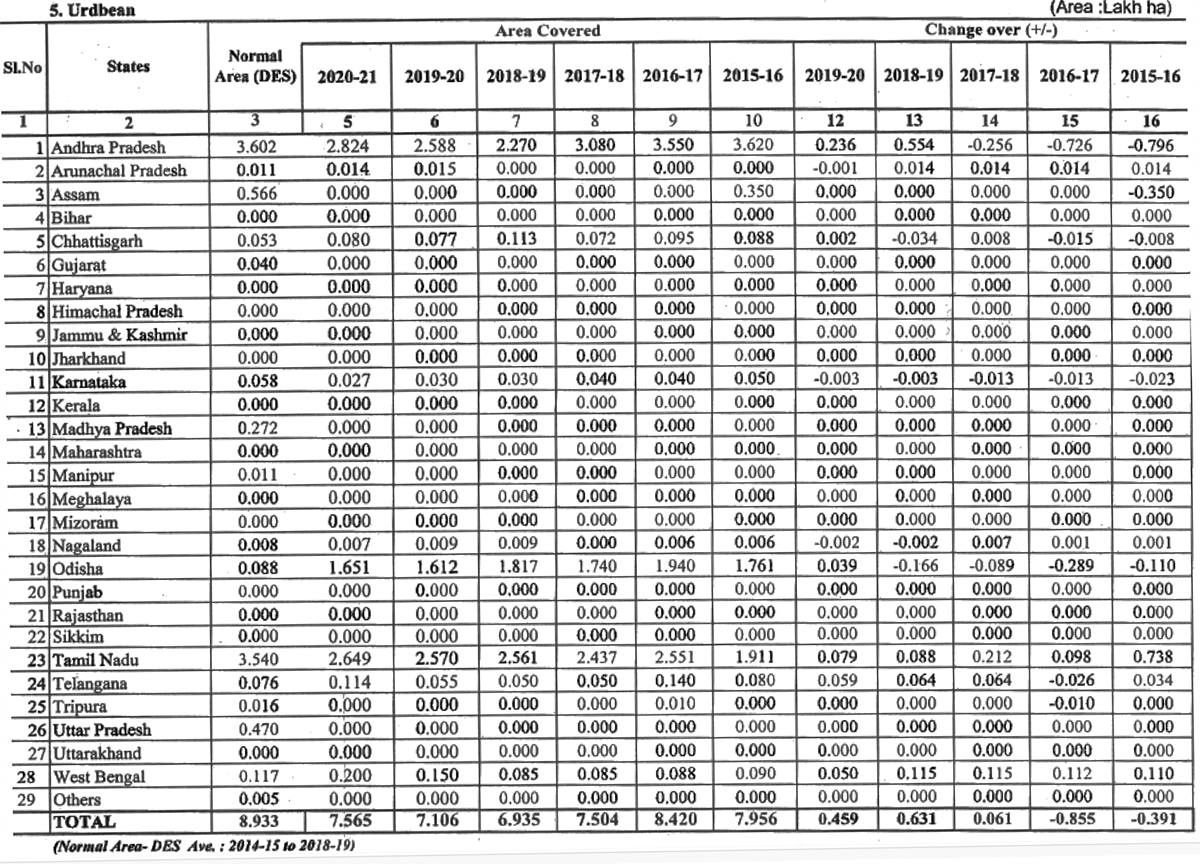
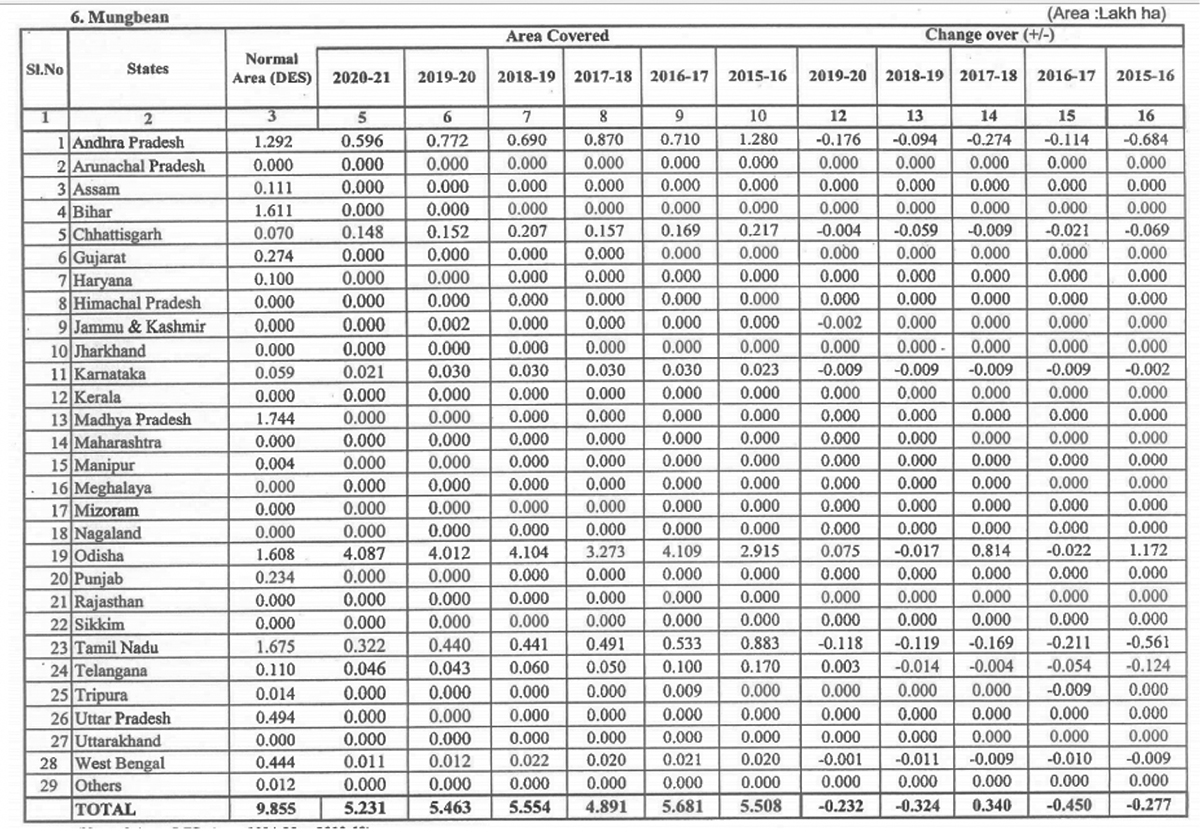
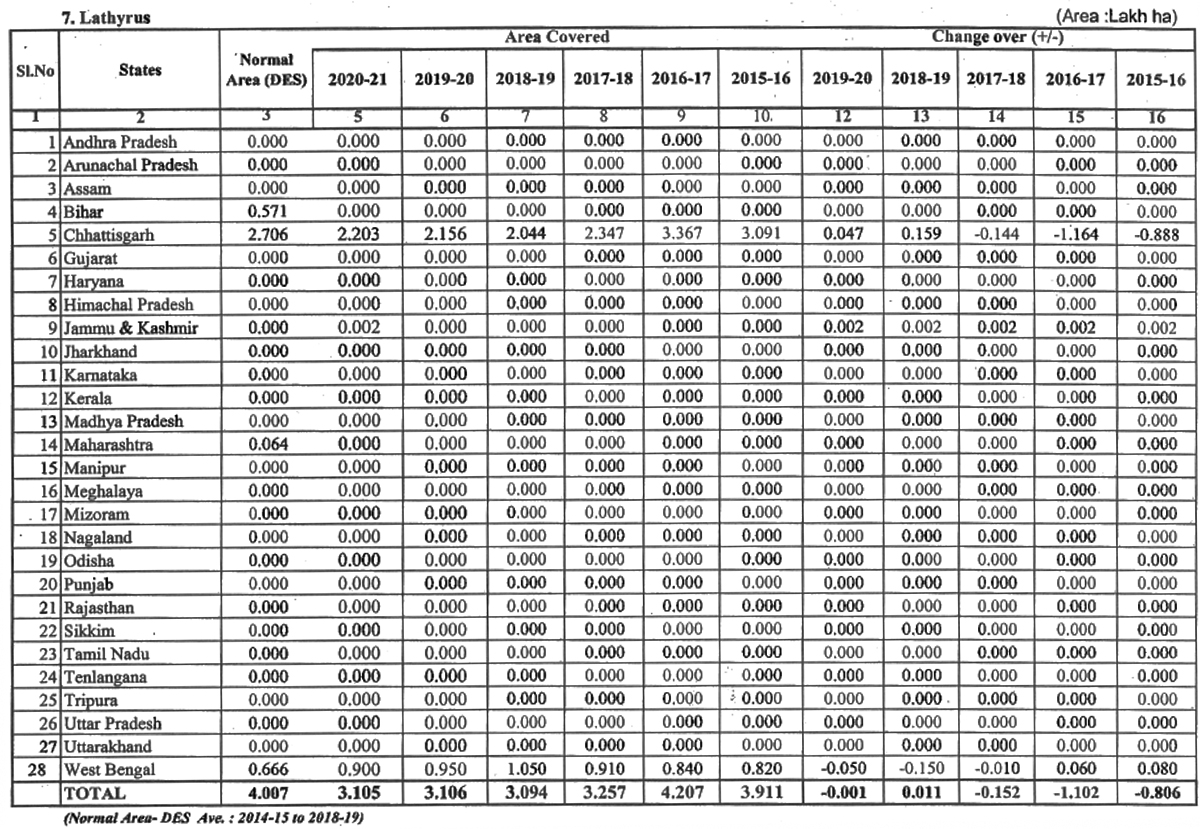
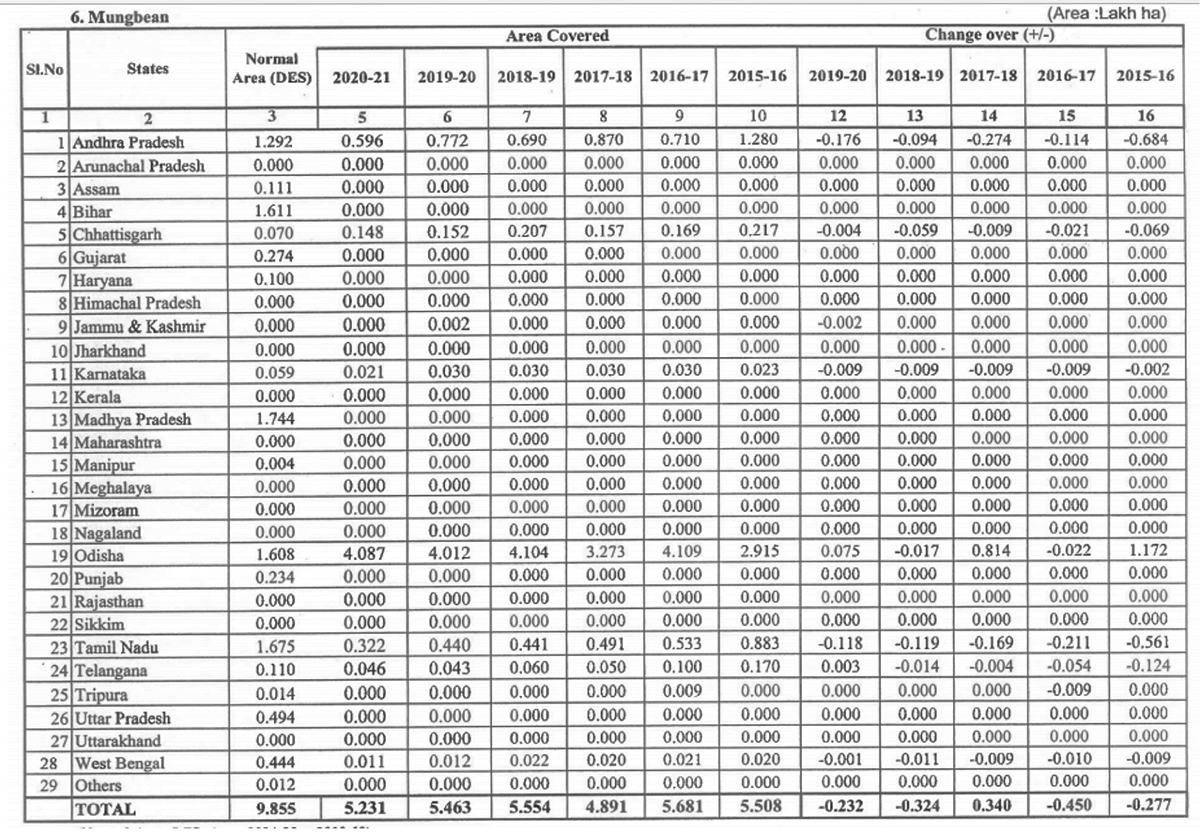

India / Rahul Chauhan / chana / Goa / Tamil Nadu / Kerala / Karnataka / Andhra Pradesh / Madhya Pradesh / Rajasthan / Maharashtra / Gujrat
Disclaimer: The opinions or views expressed in this publication are those of the authors or quoted persons. They do not purport to reflect the opinions or views of the Global Pulse Confederation or its members.